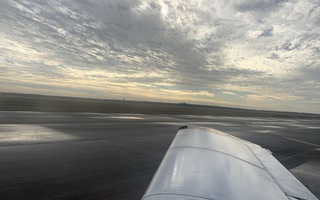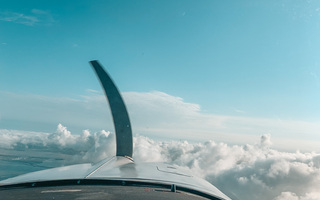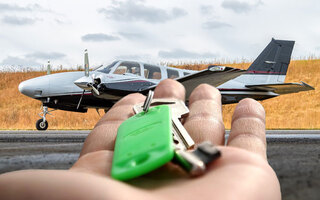Here's a short scenario:
You've just taken off from your home airport. You fly about 25 nautical miles out from where you took off and go find an area to do ground reference maneuvers.
Once you find an area you like you begin to get yourself set up to do your first maneuver: rectangular course for example. For rectangular course you have to enter it with a tailwind just like you would enter a typical traffic pattern. So now it's time to note the wind.
First rule: don't just use the direction the winds were at back at your home airport.
But it's just 25nm away, they should be the same right?
Wrong!
The winds can actually be blowing a completely opposite direction than they were back at the airport. This can be due to surface friction, the terrain of the area you're in, and of course what the weather is like for the day. If one area has thunderstorms blowing in the winds can be gusty and shifting, while 20nm away they're calm and skies are clear.
Remember this, especially on a check ride, when it comes to noting the winds.
So, if you're just over an area with a bunch of fields and no airport to report the weather how do you find the wind direction?
Very simply: look outside.
Now, obviously you cannot truly see wind. But, you can see objects that it's blowing and the direction they're facing.
A great example would be the references that I use since I fly in Houston: refineries. The stacks are almost always blowing steam from the top and it's very easy just to glance at them and see which way the wind is blowing it.
Some other outside visual references would be trees, water, smoke if there is any fires out etc.
If there isn't any references to use and you have an avionics system on board, bring up the groundspeed display. You can always look at this and fly a 360 degree turn to set up for the maneuver and check where you groundspeed is fastest and where it is slowest.
This will tell you exactly where your tailwind is and where you have a headwind, so you can calculate from there how to enter the maneuver.
Using groundspeed also tells you a rough estimate of how strong the wind is blowing, so you can have an idea of how much correction you'll need during the ground reference maneuvers to hold your track. The bigger a difference between your slowest and fastest groundspeeds, the stronger the wind likely is.





